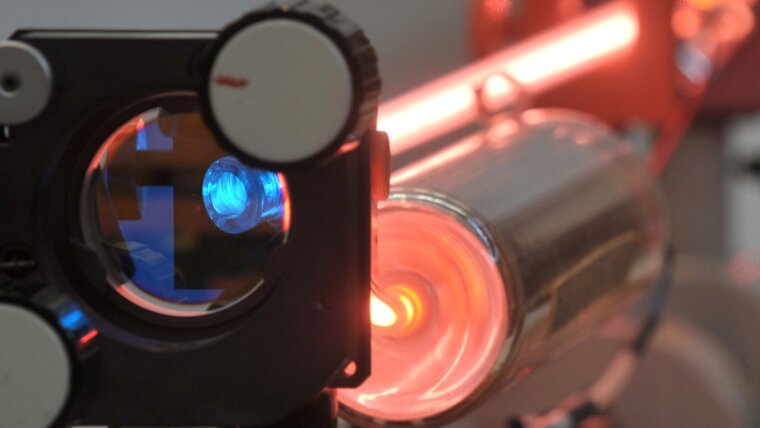
Milestones in nonlinear optics in Jena
Den ersten Lehrstuhl für nichtlineare Optik gibt es in Jena.
Image: Liana Franke/Universität JenaThe first chair of nonlinear optics in Germany was held by Max Schubert (1926–1998), who was appointed to the University of Jena in 1964. Together with his student, the physicist Bernd Wilhelmi (1938–2018), Schubert wrote an ›Introduction to Nonlinear Optics‹, a textbook that subsequently became an international standard work.
Der Physiker Gerhard Paulus entdeckt Hohe Harmonische bei Photoionisation.
Image: Liana Franke/Universität JenaSix years after Anne L’Huillier had discovered high harmonics, Gerhard Paulus (*1966), who was appointed to the University of Jena in 2007, demonstrated the corresponding effect in photoionization. In 2015, Anne L’Huillier became the first female honorary doctor of the Faculty of Physics and Astronomy at the University of Jena.
Der vorläufige Schlusspunkt der nichtlinearen Optik ist die relativistische Laserphysik.
Image: Liana Franke/Universität JenaAs it stands, the most advanced school of thought in nonlinear optics is the field of relativistic laser physics. When the laser fields are so strong that the electrons are accelerated to almost the speed of light, a whole new class of characteristic effects is produced. The first chair in this field is currently held by Malte Kaluza (*1974) at the University of Jena.




